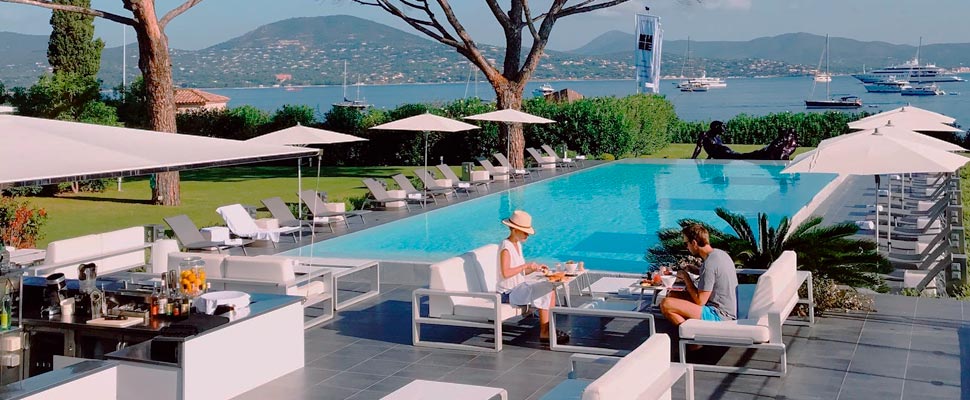8 recommendations for a successful hotel opening
In response to the different consequences of the pandemic, hotels have the opportunity to strengthen the way they serve guests .

These are some tips for a successful hotel opening and offer safe environments to your guests. / Photo: Pexels
Interior 1 | Natalia Heredia
Escucha este artículo
Leer en español: 8 recomendaciones para que la apertura de hoteles sea exitosa
In response to the different consequences that the pandemic has brought on people and their environment, hotels have the opportunity to strengthen the way they serve guests and thus offer safe spaces and environments that guarantee their experience and peace of mind for their customers.
For Natalia Heredia, founding partner and director of Interior1, a studio focused on interior design, specialized in the development of hotel, corporate and educational spaces “The post-covid guest comes from a long confinement and brings great uncertainties, so he will seek to prioritize his experience in safety, hygiene and tranquility in spaces. For architects and interior designers it will be a challenge to be able to link in their design strategies, elements that stimulate the five senses of the human being, to make it more comfortable and safe to inhabit ”.
“In the last 10 years, hotels have been transformed into interesting hubs and non-exclusive public proposals for guests, where they can find varied offers of restaurants, cafes, spas and shared work areas among others, and at this time they will have to advance on this issue so that their offer is really stronger, ” explains the Interior1 spokesperson.
For hotels to adapt their spaces in the short, medium and long term, from the interior with a safe, attractive and very sensitive offer, Interior1, offers these eight recommendations:
1. Touchless – Touchfree: The use of this type of technology makes it possible to implement biosecurity standards and elements that allow the guest to feel safe. The pandemic accelerated technology trends that were already incubating in hotels, where the user managed several of the processes online. Today, technological strategies where the user does not have to have contact with surfaces, will be key for hotel facilities, from check-in, to access to rooms, main circulations, room service among others.
2. Information and signage: In the short term, emphasis will be placed on the socialization of care protocols with signage and guidance; safe places and forms of movement will be essential. This will be maintained during the subsequent stages, but "Designers should focus on making guests feel comfortable and safe, without resorting to solutions that may be perceived as aggressive or invasive," adds Natalia Heredia.
3. Flexible spaces: In the short term, the hotels will have the main objective of adapting the places to comply with social distancing, making some adjustments in the kitchens and services such as buffets; But beyond this, in the medium and long term, the focus will be on offering flexible places that easily adapt to the new needs and tastes of the user. The spaces and "amenities" will have to evolve to serve a new type of user. This new period should make hotels aware in their search for the simple, the local, the unmasked, and the personalized.
4. Personalization of spaces: Personalized guest trends are beginning to be seen, and hotels should seek to improve their experience in private spaces such as rooms, where the rankings will not only be based on the number of people who will occupy it, but also on their lifestyle.
The spaces will have to be able to be transformed to carry out the different activities during the day and not be a place only to sleep. “From the interior design, the objective will be to focus on adaptable spaces and structures to create experiences of value depending on the user, their tastes and interests; being able to find rooms that have this flexibility in the furniture, environment and adequate resources will be essential for the post-COVID user ”, explains Interior1
Read also: Could singing spread COVID-19?
5. Efficient use of outdoor space: Having places that promote contact with nature will be part of the new needs that people will seek. Generating new 'amenities' in these areas will give great value to hotel guests and users. Terraces, front gardens and roofs of the existing buildings should be converted into green lungs of the buildings which promote the mental and physical well-being of people.
6. Materials and finishes: We start from the premise that interior design will be based, without leaving the aesthetic part behind, on something much more functional and towards comfort; less 'decorative'. We will have to specify materials that are antimicrobial, antibacterial, antifungal and 'Self cleaning' materials that allow the user to feel safe and at the same time are very easy to maintain. Today, globally, the major brands of fabric, carpet, laminate flooring products, among others, are working to incorporate raw materials with special characteristics, involving copper fibers, titanium, resins, sealants and other elements that make the product has high aseptic properties and therefore, this will be the premise when specifying.
There are other materials that have natural antimicrobial properties such as copper and bronze, which will be very useful for hotel interior design since they are not only aesthetically striking but also repel viruses and bacteria; other materials such as cork, and woods such as oak and pine have multiple antibacterial, sustainable, and at the same time warm qualities to involve in these types of spaces.
7. Flexible offers: Faced with the new reality, hotels must rethink their private spaces in order to have a more flexible and personalized offer; We can already see several examples of hotels that offer services such as coworking, office for days, long or personalized stays, among others.
8. Deglobalization and local market proposals: The new user will look for a hotel that is aware in every sense, that achieves sustainability in all its architectural, spatial and service strategies, respecting the environment, its fauna and flora depending on its location; a space that reflects awareness when offering all its services. The gastronomic proposals and consequently the concept of their interior design, must focus more and more on local and spatial products; the show / slow / local cooking will make the difference. “We are already seeing a very marked trend of de-globalization and demassification in the post-covid user.
We will seek to generate smaller, smaller-scale spaces to be, eat, sleep and share. It could be called something like 'demassification' of the spaces and services. "Post-pandemic users are now more aware of what they consume, and at the same time, more selective when choosing the type of stay they want to seek, prioritizing the less 'massive', more personalized and local proposals," concludes Natalia Heredia




